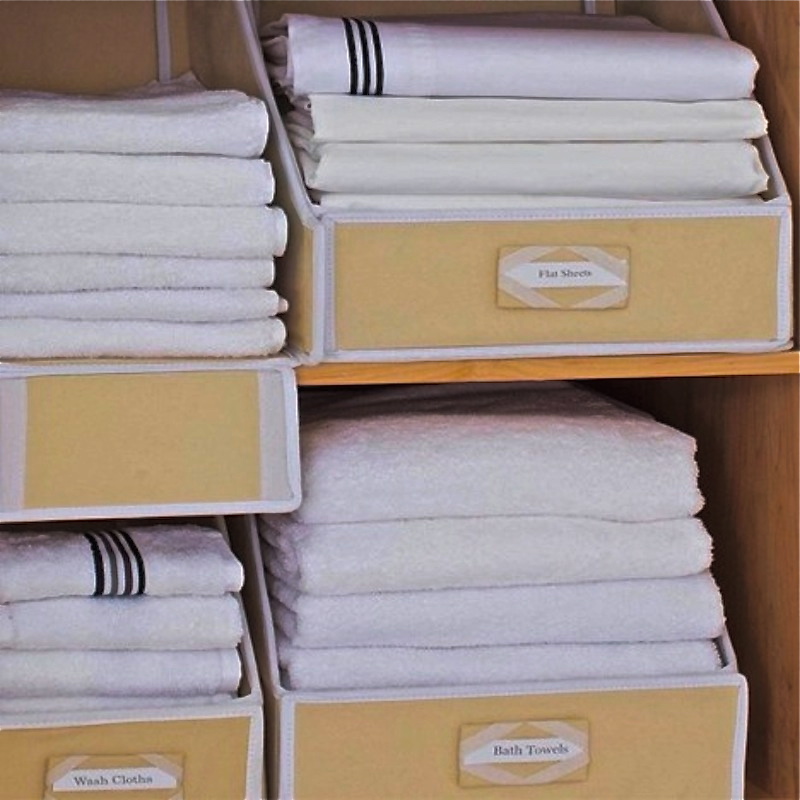Linen Closet Theology
Brenda Bliven Porter
 “‘Do you know I like this room most of all in my baby house,’ added Meg, a minute after, as they went upstairs and she looked into her well-stored linen closet. Beth was there, laying the snowy piles smoothly on the shelves and exulting over the goodly array.”
“‘Do you know I like this room most of all in my baby house,’ added Meg, a minute after, as they went upstairs and she looked into her well-stored linen closet. Beth was there, laying the snowy piles smoothly on the shelves and exulting over the goodly array.”
Long before I had a linen closet of my own, the “snowy piles” of a “generous supply of house and table linen”in Little Women captured my heart. I imagined damask tablecloths, pressed linen napkins, bed sheets with sprigs of dried lavender layered between lace-edged pillowcases, and masses of soft white towels, folded in threes. I had a similar appreciation for a passage in Little House in the Big Woods:
“The little house was fairly bursting with good food stored away for the long winter. The pantry and the shed and the cellar were full, and so was the attic . . . The large, round, colored pumpkins made beautiful chairs and tables. The red peppers and the onions dangled overhead. The hams and the venison hung in their paper wrappings, and all the bunches of dried herbs, the spicy herbs for cooking and the bitter herbs for medicine, gave the place a dusty-spicy smell.”
More than a century after the Ingalls family, my parents also spent many late summer days growing and preparing food for the winter. Bins in the basement contained bushels of bright orange carrots and homegrown potatoes. Gleaming glass jars of tomatoes, peaches, pears, grape juice, and homemade mincemeat lined the shelves. My mother kept meticulous records of her work, and in one of her best years, she announced that she had prepared over 500 containers of canned and frozen foods. We showed our friends the cellar shelves and smiled with satisfaction at the homely beauty of the neat rows of Mason jars.
I admit to a great love for home and hearth, but I wonder if there is more at work than just the appreciation of the domestic in the resonance of these images. Perhaps it has something to do with abundance. Meg’s linen closet is bountifully supplied, and so is the Ingalls’ attic. The Marches and the Ingalls have what they need—and more. One clean white towel is nice, and necessary, but stacks and stacks of clean white towels and napkins and tablecloths is arresting. One pumpkin is rather ordinary, but an attic full to the bursting with orange pumpkins, “dusty”green spices, and bright red peppers is astonishing. The sheer number of things makes me smile, and, like Beth, I “[exult] over the goodly array.”Is the distinctive sensual appeal of images like these due, in part, to the bounty of the display? We like to see big groupings of the same object: the repetition of a single element in an artist’s design creates emphasis and draws our attention, àla Andy Warhol’s Soup Cans.
Perhaps these images of plenty remind us that that we have been provided for, even that we are loved. Not only will there be enough, but great abundance has been stored up for us as well. This earthly extravagance reminds me of the abundance of love, the “plenteous grace” lavished on us by the lover of our souls. And on the occasions when life’s circumstances dull my perceptions of his great love, reflecting on literary and artistic images of plenty provides a helpful reminder that he has come that we might have life, “and have it more abundantly.”